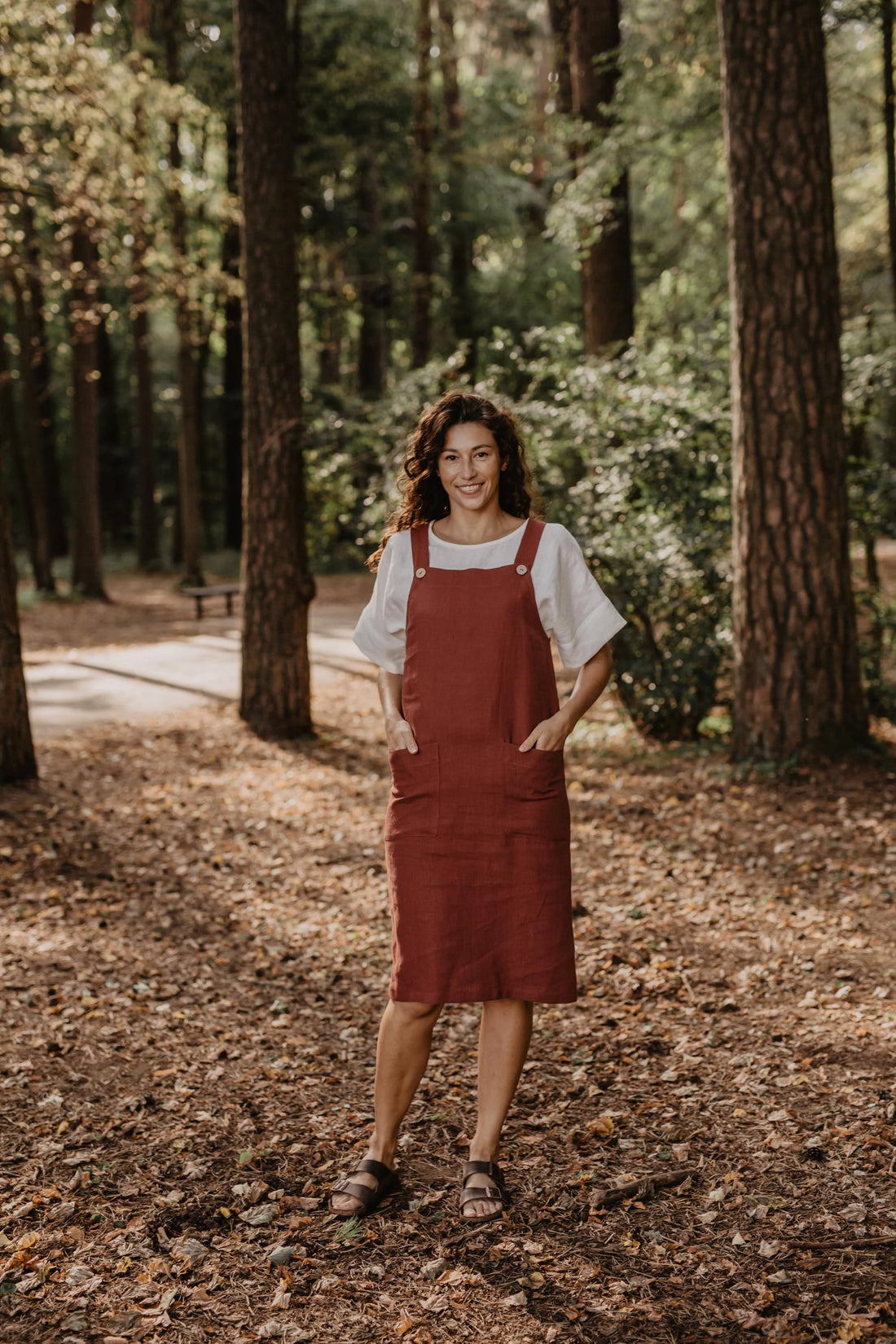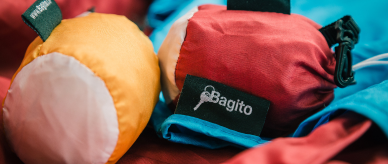In the fast-paced world of fashion, where trends come and go like passing clouds, one enduring concern stands tall – sustainability. As conscientious consumers, we find ourselves navigating a sea of fabrics, each claiming to be the epitome of eco-friendliness. But what's truly green, and what's merely a marketing ploy? Fear not, fellow fashion warriors, for we embark on a deep dive into the realm of lower-impact fabrics and fibers, unraveling the mysteries and unveiling the champions of conscious couture.
Decoding Labels and Choices
The journey begins with the enigma of fabric labels. What should we look for when choosing lower-impact fabrics? Are plant-based options always superior, or can synthetic materials hold their ground in the sustainability arena? This, my friends, is the great fabric debate.
Whether you're a seasoned clothes maker or simply a lover of fashion looking to minimize your impact, the choices you make in fabric selection can have a tangible effect on the well-being of our planet, its inhabitants, and our furry friends. So, let's sift through the layers of information and misinformation to uncover the truth behind sustainable textiles.
Plant-Based Fibers
Recycled Cotton:

50% recycled cotton, 50% recycled polyester
Cotton, the ubiquitous fabric adorning our closets, has a darker side – water-thirsty and pesticide-hungry. Enter organic cotton, aiming to minimize the environmental toll of cotton production. However, recent scrutiny revealed flaws in the organic cotton certification system, raising questions about its authenticity. For the gold standard in responsibility, turn to recycled cotton. Crafted from post-industrial and post-consumer cotton waste, it not only reduces water and energy consumption but also keeps cotton garments away from the ominous fate of landfills.
Organic Hemp:
Hemp, the versatile "sober cousin" of marijuana, has become a darling of sustainable fashion. Grown globally with minimal water requirements and no need for pesticides, hemp is an environmental champion. But, and there's always a but, not all hemp is created equal. Some farmers still employ environmentally damaging fertilizers. When embracing hemp, opt for the organic variety and scrutinize the brand's commitment to sustainability.
Organic Linen:
Linen, derived from the flax plant, boasts a rich history as one of the oldest fibers in the world. Thriving in poor-quality soil with minimal water and pesticide needs, linen is a sustainable superstar. Utilizing every part of the plant minimizes waste, but beware of the heavy bleaching process for that pure white linen. Stick to natural tones for a more environmentally-friendly garment afterlife. Durable, moth-resistant, and fully biodegradable, linen is not only good for the planet but also a practical and stylish choice.
TENCEL Lyocell:

TENCEL Lyocell emerges as a modern marvel, a man-made cellulosic fiber born from dissolving wood pulp. Produced by Austrian company Lenzing AG, it's making waves with its impressive qualities. Fifty percent more absorbent than cotton, requiring less energy and water, and managing chemicals in a closed-loop system – TENCEL Lyocell is a sustainable dream. Its moisture-wicking and anti-bacterial properties make it a versatile option, especially for activewear that battles polyester on the sustainability front.
Animal-Derived Materials:
Recycled Wool:
Wool, known for its durability, warmth, and comfort, has its ethical concerns and resource-intensive production methods. Cue recycled wool, the hero emerging from traditional Italian processes. With environmental and ethical impacts significantly reduced, recycled wool taps into the existing fiber circulation, transforming discarded garments into sought-after recyclable options. Versatile and easily blended with other fibers, recycled wool is becoming a star in the sustainable fashion arena.
Futuristic and Innovative Fabrics:
ECONYL:
Embark on a journey into the depths of sustainability with ECONYL, a recycled yarn created by Italian innovators Aquafil. Derived from recycled synthetic waste – think industrial plastic, waste fabric, and ocean fishing nets – ECONYL proves that recycled doesn't mean compromised quality. With less water usage and waste generation compared to conventional nylon yarn, ECONYL's manufacturing process involves collecting, cleaning, and repurposing waste into a high-quality, eco-friendly yarn. A caveat – like other synthetics, ECONYL emits microfibers, making it less suitable for frequently machine-washed clothing. However, it shines as a practical and lower-impact option for less wash-dependent items like shoes, activewear, swimwear, and outerwear.
Bananatex:
In 2018, Swiss brand QWSTION introduced Bananatex, the world's first durable fabric made purely from banana plants. Cultivated in the Philippines through a sustainable mix of agriculture and forestry, banana plants require no pesticides, fertilizers, or extra water. Beyond its eco-friendly production, Bananatex has garnered international recognition, winning prestigious awards such as the Green Product Award 2019 and the German Sustainability Award Design 2021. Certified Cradle to Cradle Gold, Bananatex isn't just a fabric; it's a circular alternative to synthetic counterparts, contributing to reforestation, biodiversity, and the economic well-being of farmers.
Circulose:
Introducing CIRCULOSE, a revolutionary material crafted by recycling cotton from worn-out clothes and production waste. This "dissolving pulp" made from 100% recycled textiles takes old jeans forgotten in the depths of your closet and transforms them into viscose, lyocell, modal, acetate, and other regenerated fibers. The process involves spinning these fibers into yarns, weaving or knitting them into fabrics, and finally, fashioning them into new high-quality textile products. CIRCULOSE embodies circular fashion principles, representing a crucial step towards a more sustainable fashion industry.
Tips and Tricks for Lower-Impact Fashion
As you embark on your journey towards a conscious wardrobe, armed with knowledge about lower-impact fabrics, here are some additional tips to keep in mind:
- Educate Yourself: Stay informed about the latest developments in sustainable fashion. Follow reputable sources, read articles, and attend events or workshops dedicated to sustainable practices.
- Choose Quality Over Quantity: Invest in well-made, durable pieces that stand the test of time. Quality items not only last longer but also reduce the need for frequent replacements, minimizing your overall impact.
- Support Sustainable Brands: Discover and support brands committed to ethical and sustainable practices. Look for certifications like Fair Trade, GOTS (Global Organic Textile Standard), or B Corp to ensure a brand's dedication to responsible production.
- Second-Hand Shopping: Explore thrift stores, vintage shops, or online platforms for second-hand clothing. Giving pre-loved items a new home extends their lifespan and reduces the demand for new production.
- DIY and Upcycling: Get creative! Learn basic sewing skills and upcycle old garments into new, trendy pieces. Personalizing your wardrobe not only adds a unique touch but also contributes to a more sustainable fashion ethos. There's something incredibly satisfying about transforming an old pair of jeans into a stylish denim tote or giving a plain shirt a new life with a splash of tie-dye.
- Capsule Wardrobes: Embrace the minimalist approach by curating a capsule wardrobe with versatile pieces that can be mixed and matched. This not only streamlines your closet but also encourages thoughtful consumption.
- Renting and Swapping: For special occasions or statement pieces, consider renting instead of buying. There are numerous platforms that allow you to rent high-quality clothing for a fraction of the cost. Additionally, organizing clothing swaps with friends or within your community is a fun way to refresh your wardrobe without spending a dime.
- Careful Washing Habits: Extend the life of your garments by adopting mindful washing practices. Opt for cold water, air-dry when possible, and use a Guppyfriend bag to capture microfibers during machine washes. Taking care of your clothes ensures they stay in circulation longer.
- Recycling Programs: Look into brands that have recycling programs for their products. Some companies offer take-back initiatives, where you can return old clothing for recycling or repurposing. This helps close the loop in the fashion life cycle.
- DIY Natural Dyes: Experiment with natural dyes made from kitchen scraps or plants. Not only does this add a personal touch to your clothing, but it also eliminates the harmful chemicals often associated with conventional dyeing processes.
Fashioning a Greener Tomorrow
In the ever-evolving landscape of sustainable fashion, our choices as consumers play a pivotal role in shaping a greener future. Armed with knowledge about lower-impact fabrics and an arsenal of eco-friendly practices, we have the power to influence the industry towards more responsible and ethical standards.
As we tread the path of conscious consumption, let's celebrate the innovation and dedication of brands that are redefining fashion's impact. From recycled cotton breathing new life into our wardrobe staples to Bananatex proving that banana plants can be more than just a snack – each fabric tells a story of sustainability, resilience, and progress.













